Building the Modern Hanfu System
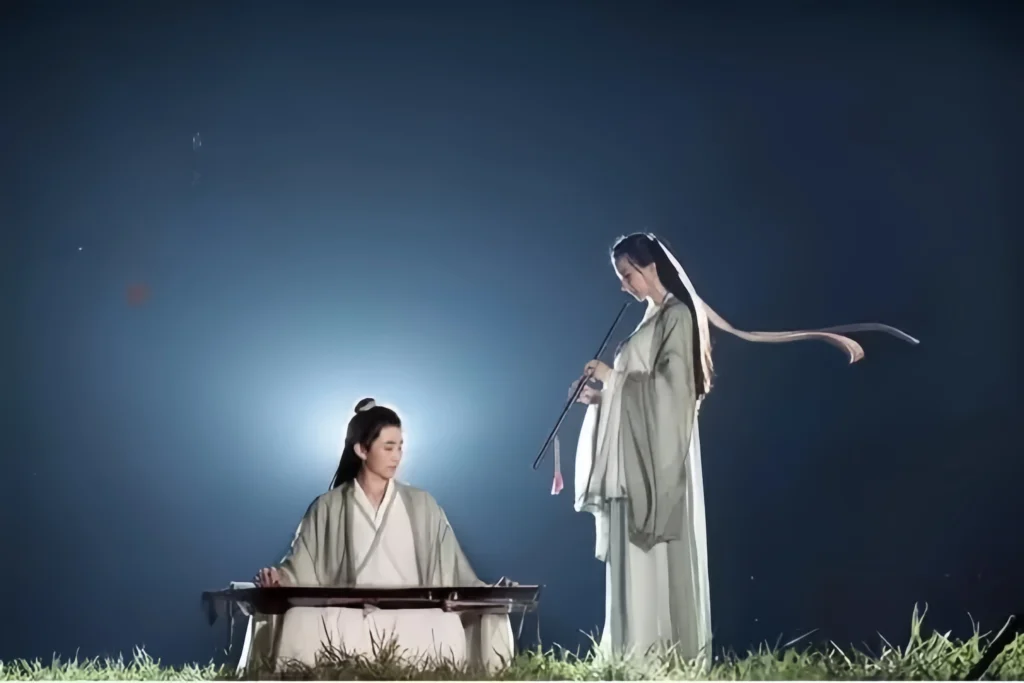
Definition of Hanfu:
Hanfu is the ethnic clothing created by today’s Han people, designed to meet specific dressing needs. It’s a mix built from the original beauty and aesthetics of Han clothing across different dynasties, forming the foundation of the Modern Hanfu system and reflecting Hanfu design evolution.

Current Issues in Promoting Hanfu:
Wearing It Wrong: Some folks don’t match the occasion—think wearing fancy ritual outfits for a casual shopping trip or rocking shorts and a tee at a sacrifice. To outsiders, it might look like showing off or breaking the rules, challenging Hanfu cultural rituals and affecting the Modern Hanfu system.
Dynasty Mix-Up: People say Hanfu isn’t tied to one dynasty, but when introducing it to the public, they use terms like Tang-style or Song-style, or list Tang clothing features as XXX and Song as XXX. This leaves folks confused about whether it’s Hanfu or a history lesson on old outfits, complicating the Traditional Chinese clothing guide.
Why Building a Modern Hanfu System Can’t Just Copy Artifacts:
Against Tradition: Han clothing history never saw a widespread copy-paste of past styles, so copying artifacts goes against social habits and tradition, challenging the Traditional Chinese clothing guide.
Breaking History Apart: Han clothing carries thousands of years of cultural richness—our treasure trove. Picking one era’s outfit for exclusive promotion cuts history into pieces.
Stuck in the Past: If we treat ancient stuff as the unchangeable gold standard, and any change makes it “not authentic,” then logically, going naked would be the truest form—since wearing clothes broke that “tradition” first!
Mixing Up Ideas: It blurs the line between ancient costumes and Hanfu. Some old costume ideologies don’t fit today’s world.
Losing Order: The old clothing order doesn’t mesh well with today’s society. Copying it might look orderly on the surface, but in practice, it’s a chaotic mess.
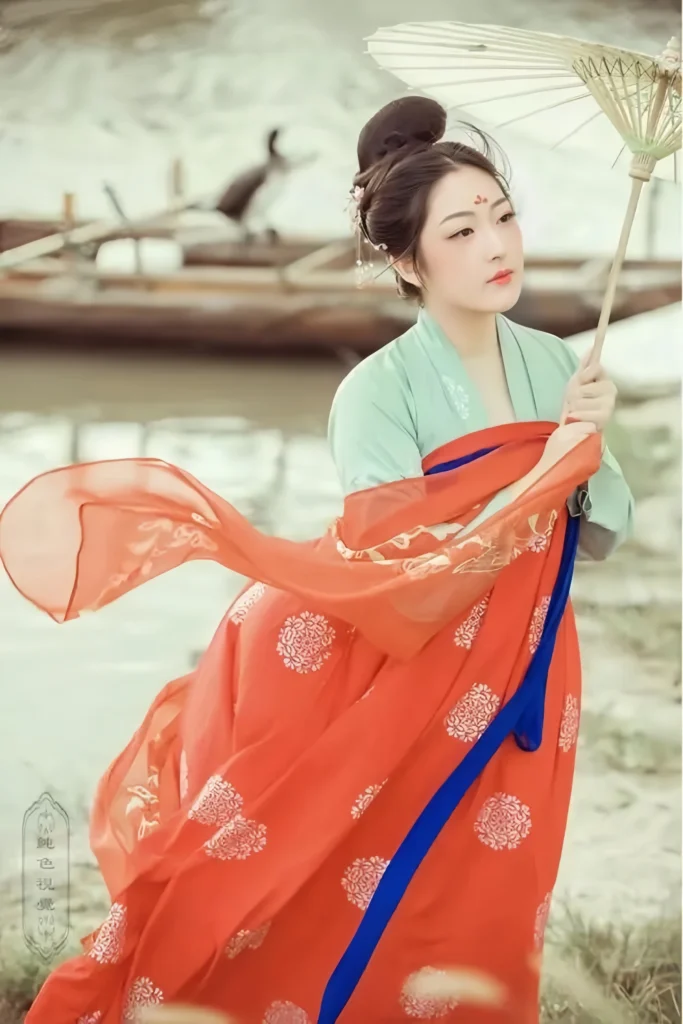
Traditional Nature of Hanfu:
Hanfu is a traditional outfit, and this tradition has two sides: inheritance and creation. So, clothes straight from artifacts should be called ancient costumes, not Hanfu. Hanfu should be a living, evolving thing, reflecting Hanfu design evolution.
Key Focus for Building a Modern Hanfu System:
Use the aesthetics of the axial age as the core guide.
Strip away the old hierarchy and class vibes from ancient clothing.
Create a new order based on usage occasions and function, aligning with Hanfu style tips.
New Style Categories:
Ru: A short jacket, length up to or at the knee, with sleeve edges, single or padded layers.
Shan: A short jacket, length up to or at the knee, no sleeve edges, single or padded layers.
Ao: A short jacket, length up to or at the knee, padded with fluff or made with fur.
Pao: A long robe, length past the knee, with overlapping front flaps when worn.
Zhaoyi: A long outer layer, length past the knee, with front flaps that don’t overlap when worn.
Qun: A skirt made from one solid piece.
Chang (Ritual Skirt): A skirt split into two separate front and back pieces.
Ku: Outer long pants, either open-crotch or closed-crotch.
Kun: Closed-crotch shorts, wearable under ku or alone.
New Usage Occasion Categories:
Casual Wear: Casual wear is for home, chilling, travel, or outdoor fun—non-formal vibes. Styles focus on comfort and simplicity, keeping it low-key with Hanfu style tips. Tops are knee-length or shorter, with narrow sleeves—sleeveless, half-sleeve, or just past the palm. Bottoms can be skirts or pants, length kept moderate, not dragging on the ground. Girls can go wild with hairstyles, makeup, and accessories, as long as it’s simple and chill.
Formal Wear: Formal wear is for gatherings, feasts, or greeting guests—more official but still easy to move in. Styles split into robes or skirt sets. Robes go past the knee or to the ankle; skirts hit the ankle but don’t drag. Sleeves can be narrow or mid-length, longest covering the fingertips. Guys can add a headscarf if they want; girls with skirts can toss on a shawl or pouch. Hairstyles, makeup, and accessories are free, just keep it harmonious.

Ceremonial Wear: Ceremonial wear is for big holidays, celebrations, or birthdays—big on ritual, light on convenience. Styles split into robes or skirt sets. Robes reach the ankle or trail the ground, no slits at the hem. Skirts hit the ankle or trail. Sleeves are mid-length or wide, longest stretching a palm past the fingertips. Guys need a headscarf; girls with skirts can add a shawl or pouch. Hairstyles, makeup, and accessories can get fancy, emphasizing the ritual feel.
Ritual Wear: Ritual wear is for special occasions like sacrifices or weddings—all about ceremony, less about ease. Styles split into robes or skirt sets, with fixed outfit combos. It breaks into two types:
- Sacrifice Wear: Splits into home and public versions. Home use is a dark blue robe with black trim and a black square scarf. Public use is a black robe with a yellow skirt (mianfu style), all hemp-made, no tassels, no patterns, echoing the “serving the king” vibe. It’s the fanciest in the Hanfu system but keeps it simple, no flashy stuff. Same for guys.
- Wedding Wear: Both guys and girls use wide-sleeve ruqun sets, skirts trailing a foot or more. Guys add a ritual hat; girls go for a high bun with fancy decor. Outer layers are silk with subtle patterns, prints, or embroidery. It’s the flashiest in the Hanfu world, packed with ornate details.
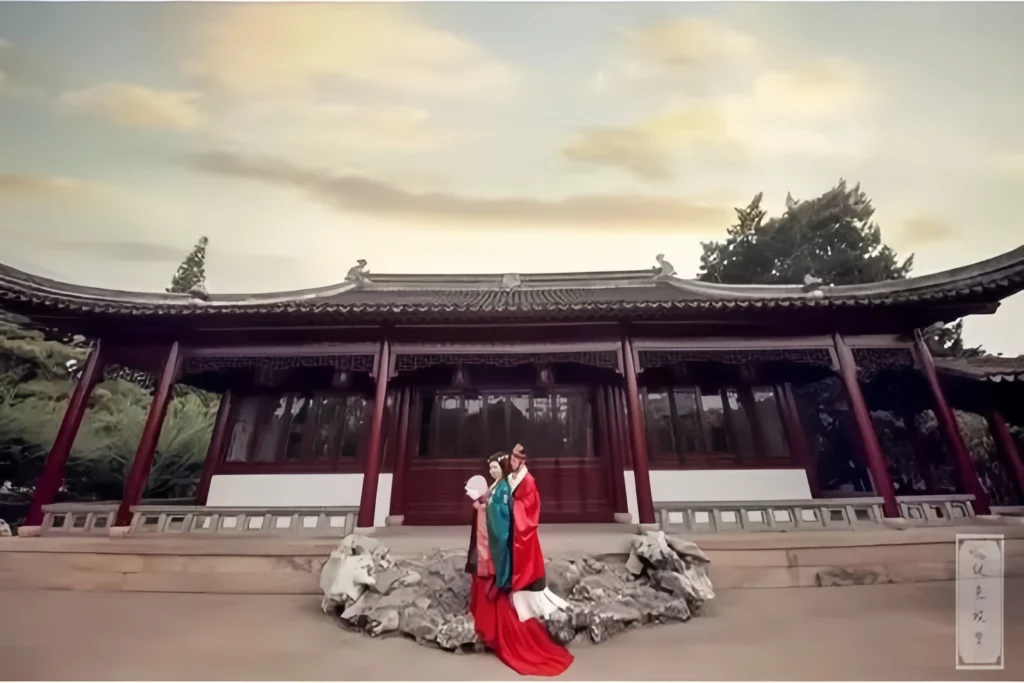
Example: Take a round-neck style—under the new system, you can tell casual from ceremonial just by the shape. Since round-necks came from underwear, they’re skipped for ritual outerwear.
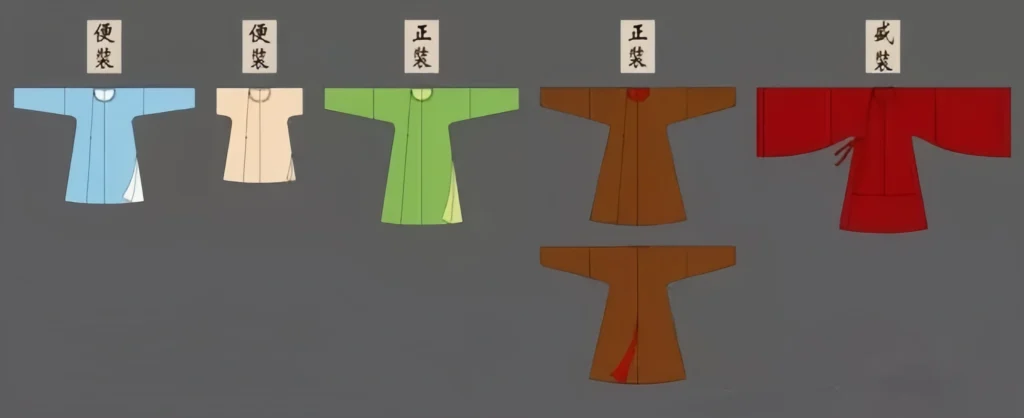
Rebuilding Rituals in the New Hanfu System:
Let’s use a guy’s coming-of-age ceremony as an example. If doing the three-step ritual, start with military gear, then scholar gear, and end with sacrifice gear. If simplified to one step, just use sacrifice gear.
First Step (Military Gear): Marks adulthood and the right to join the army. Can also mean “martial,” reminding the guy to be brave and honest.
Second Step (Scholar Gear): Marks adulthood and the right to vote. Can mean “civil,” urging kindness and humility.
Third Step (Sacrifice Gear): Marks adulthood and the right to perform rituals. Can mean “spiritual,” teaching gratitude to heaven, ancestors, and sages. Military gear matches a formal style, scholar gear a ceremonial one, and sacrifice gear a ritual deep robe.
About Han Elements:
Han elements aren’t just about shrinking traditional cuts—since they show up as elements, they’re not Hanfu itself. The right definition is: Han elements are Western clothes jazzed up with Hanfu’s beauty, patterns, or shapes. At heart, they’re still Western-style.

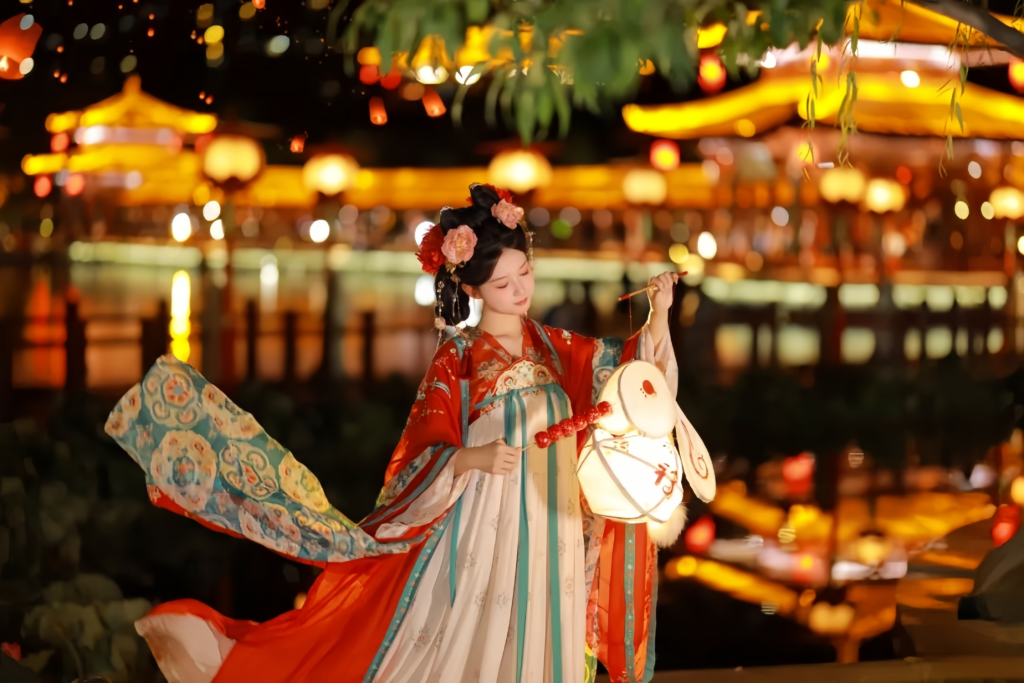
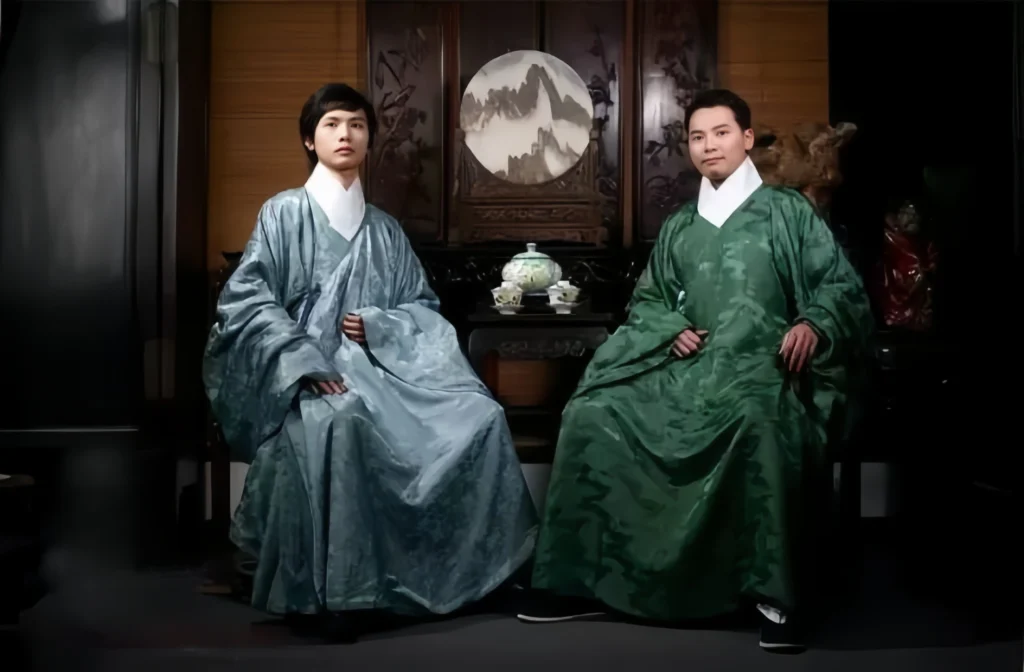



Responses